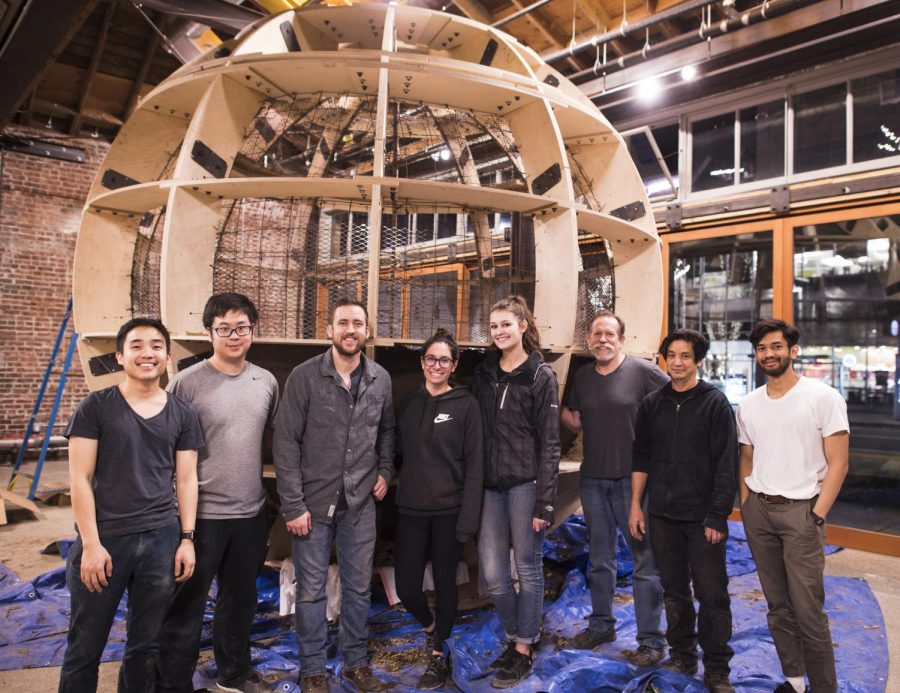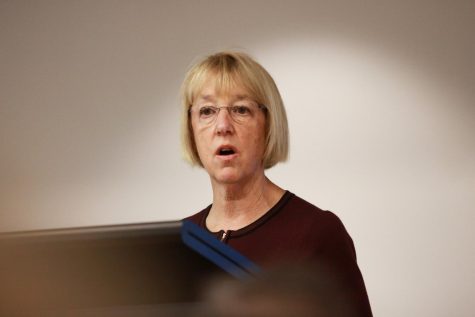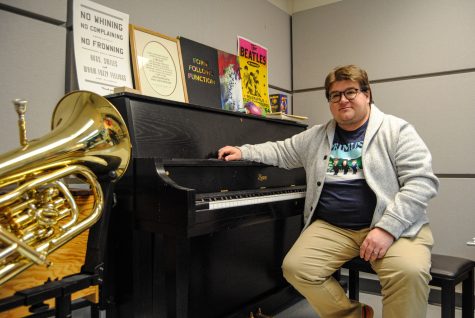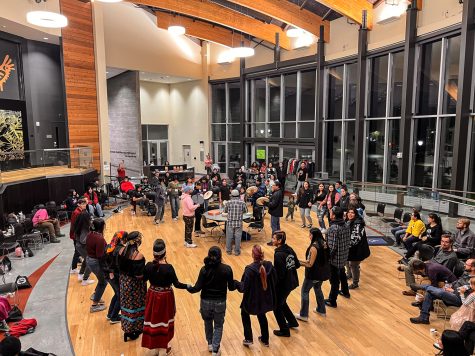Exhibit emphasizes light with spheres
Designers will use traditional Japanese method to construct large spheres, reflect light
Taiji Miyasaka, second from right, and his colleagues stand in front of the unfinished sphere exhibition, which will be shown in the Seattle MadArt studio. They constructed the largest sphere using a Japanese wall method.
February 5, 2019
An exhibition featuring three spherical structures is being constructed in part by Taiji Miyasaka, WSU professor in the school of design and construction. The designers of the exhibit plan for their creation to enter the Seattle MadArt studio Feb. 26.
The exhibition is called Circum-ambience for its use of ambient light, or what Miyasaka said is also known as diffused light.
Light can enter the sphere, so the material on the wall scatters the light and creates ambient light. This effect cannot be interrupted since there is nothing else in the sphere that could possibly block the light, Miyasaka said.
“I’m interested in how we perceive light in certain spaces,” Miyasaka said.
When Miyasaka was thinking about what he wanted to do for his exhibit, he thought about the way he could incorporate light into his design.
Using a generic geometry form allowed him to control the process of how to make each structure in the exhibit. The materials, size and method he used to make each sphere were different to increase the contrast between the structures.
“They are in an art gallery, so people think they are art pieces,” Miyasaka said, “but in my mind this is an architecture project, and it’s an extension of what I have done in the past.”
Miyasaka said he knew what he wanted the largest sphere to look like from the beginning. They structured the largest sphere using a traditional Japanese wall construction method, he said. It has a plywood frame with mud on the inside.
The largest sphere, he said, was created with the help of Eric Barrow, an instrument maker in the Voiland College of Engineering and Architecture, and Miles Pepper, engineering tech supervisor for the Voiland College.
Barrow and Pepper were imperative to the sphere’s creation, including erecting frames for it, Miyasaka said.
Miyasaka said a computer generated the design and then a structural engineer endorsed it, which meant the design would not collapse.
He said Japanese plasterers will add a coat of soil on the inside. Then they will layer more of the same soil of a finer grain, and pry it up. This will help smooth the wall.
The second sphere is made from dismantled construction materials Miyasaka collected, mostly from a house under demolition in Seattle. This sphere is difficult to see inside of because of the materials, he said.
Originally, Miyasaka did not know the design he wanted for this particular sphere’s structure. He started to put the materials together and eventually developed a design he wanted for it.
When he moved on to the third sphere, he painted it yellow and layered on skinned wire, which he said is a type of mesh material.
Gradations of light occur because of this skinned wire, he said. Its porous texture makes it easy to see inside the sphere.
“I tried to erase the materiality of the metal. I’m hoping that people focus on colors,” Miyasaka said.
Miyasaka said none of the spheres are finished yet, but once they are, people can enter the largest sphere and see how the ambient light is affected by its shape. They won’t, however, be able to enter the other spheres.
The opening reception for the exhibition is from 1-3 p.m. on Feb. 24. The exhibit will be open from Feb. 26 to Mar. 23 at Seattle’s MadArt studio.
At the end of the exhibition, he will dismantle the spheres.




















